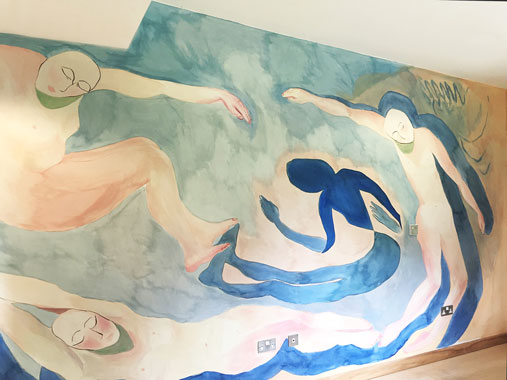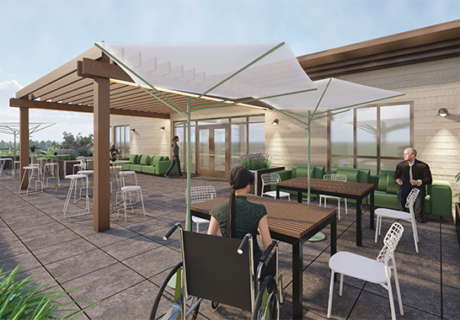Conversation Starters: Using Art To Spark New Discussions At Springfield University Hospital
Artwork programs have come a long way toward being recognized as a vital part of a warm and inviting healthcare setting that promotes healing.
However, appropriate safety concerns in behavioral healthcare facilities have left some facilities in this sector lagging behind. London artist Tim A. Shaw and curator Niamh White saw this firsthand while visiting a friend in a mental health unit.
“We were struck by how cold and clinical the healthcare environment was,” Shaw says. “The artwork on the unit didn’t do much to change the atmosphere or suit the space or its audience. If someone is mentally and physically unwell, it seems common sense that the right environment to live and recover is vitally important.”
In response, the artistic duo founded Hospital Rooms, a nonprofit organization that aims to improve environmental conditions in mental health hospitals by inviting artists to create installation-based artworks. For its first project last winter, the organization partnered with Phoenix Ward, a secure residential psychiatric rehabilitation unit at Springfield University Hospital (South London) for people diagnosed with schizophrenia.
Using their connections in the art scene, Shaw and White approached artists and designers whom they knew would be thoughtful about the space and the audience and would see the inherent space restrictions, such as no ligature points or sharp edges, as an exciting challenge.
For several months, Hospital Rooms held meetings with the artists and the hospital staff to discuss spaces on the unit where artwork could be incorporated, appropriate imagery and subjects, and safe materials, including nontoxic paints that could wipe clean and print media that could be installed without framing. They also talked with patients to find out what they thought would be more interesting and stimulating to see.
In April, 11 artists began installing 10 permanent works in the ward, wrapping up in June. Local suppliers donated materials, including professional acrylic paints and printing services to the program, which was supported with funding by Arts Council England and the Morris Markowe League of Friends of Springfield University Hospital.
Shaw says many of the works were inspired by the artists’ visits to the ward. For example, Aimee Parrott focused on giving the women’s lounge a more domestic touch by painting a large mural directly onto the main wall, adding a more soothing color to the other walls, buying plants for the room, and making new curtains.
Michael O’Reilly spent three weeks painting a warm yellow “wallpaper” on the walls of the quiet rooms as well as 12 trompe l’oeil paintings that referenced travel posters, book covers, and cartoon illustrations. “The room functions as a quiet, thoughtful space that lends itself to multiple viewings,” Shaw says.
Hannah Spreadbury-Troy, an occupational therapist at Phoenix Ward, says the hospital’s original artwork “faded into the background.” She adds: “Most of the walls were white or a pastel shade. Hospital Rooms came in and tweaked the colors, very cleverly changing the shade to produce more light and warm up the room.”
One of the most beneficial parts of the program, she says, has been a series of workshops with the artists and patients. “We definitely have had people responding creatively [to the artwork],” she says. “Having direct interactions with the artists on the ward has been hugely beneficial and motivational.”
Shaw says one patient was inspired by Gavin Turk’s “Eggs Balance,” a vinyl piece of two different-sized eggs with one balanced on top of the other, to make a collage about herself. “We wanted the artworks to be complex and stimulating and to start conversations,” he says.
To that end, Shaw painted the walls of the dining room to become the Phoenix Gallery, with colored blocks to form borders for artworks that will be created by patients during future workshops or during their treatment.
“It’s incredible to see [patients] and staff discussing the ideas behind a piece of work, and how it relates to a memory or feeling they are having themselves,” he says.
Anne DiNardo is the senior editor of Healthcare Design. She can be reached at anne.dinardo@emeraldexpo.com.








